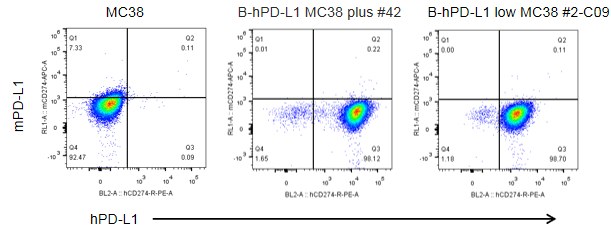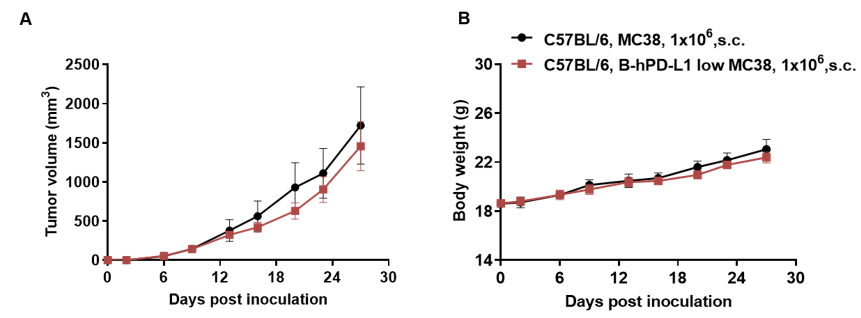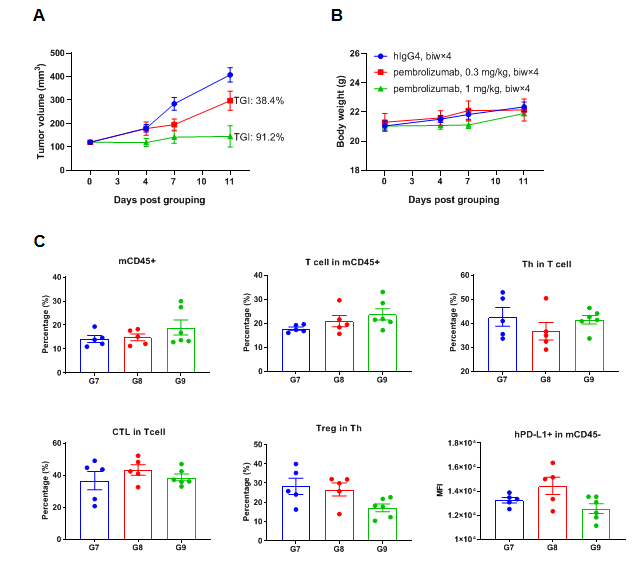


• 310889
| Product name | B-hPD-L1 low MC38 |
|---|---|
| Catalog number | 310889 |
| Strain background | C57BL/6 |
| Aliases | CD274, PDCD1L1 |
| Tissue | Colon |
| Disease | Colon carcinoma |
| Species | Mouse |
| Application | B-hPD-L1 low MC38 cells have the capability to establish tumors in vivo and can be used for efficacy studies. |
on this page
The mouse Pdl1 gene was replaced by human PD-L1 low coding sequence in B-hPD-L1 low MC38 cells. Human PD-L1 is expressed on the surface of B-hPD-L1 low MC38 cells.
Gene targeting strategy for B-hPD-L1 low MC38 cells. The exogenous promoter and human PD-L1 coding sequence were inserted to replace part of murine exon 3. The insertion disrupts the endogenous murine Pdl1 gene, resulting in a non-functional transcript.

PD-L1 expression analysis in B-hPD-L1 low MC38 cells by flow cytometry. Single cell suspensions from wild-type MC38, B-hPD-L1 MC38 plus and B-hPD-L1 low MC38 cultures were stained with species-specific anti-PD-L1 antibody. Mouse PD-L1 was detectable in wild-type MC38 cells. Human PD-L1 was detectable in B-hPD-L1 low MC38 cells, and human PD-L1 was expressed highly on the surface of B-hPD-L1 MC38 plus cells. The 2-C09 clone of B-hPD-L1 low MC38 cells was used for in vivo experiments.


Antitumor activity of anti-human PD-1 antibody (pembrolizumab, in house) in B-hPD-1/hPD-L1 mice. (A) Anti-human PD-1 antibody inhibited MC38 tumor growth in B-hPD-1/hPD-L1 mice. Murine colon cancer B-hPD-L1 low MC38 cells were subcutaneously implanted into homozygous B-hPD-1/hPD-L1 mice (female, 7-week-old, n=6). Mice were grouped when tumor volume reached approximately 100-150 mm3, at which time they were treated with anti-human PD-1 antibody indicated in panel. (B) Body weight changes during treatment. (C) TILs analysis from tumor tissue. Results showed that anti-human PD-1 antibody was efficacious in controlling tumor growth in B-hPD-1/hPD-L1 mice, demonstrating that the B-hPD-1/hPD-L1 mice provide a powerful preclinical model for in vivo evaluation of anti-human PD-1 antibodies. Values are expressed as mean ± SEM.